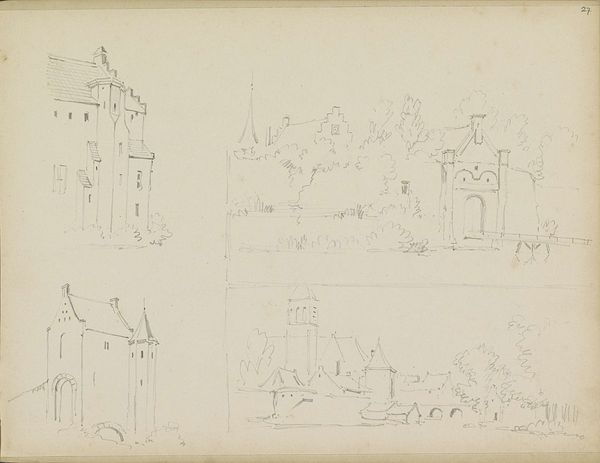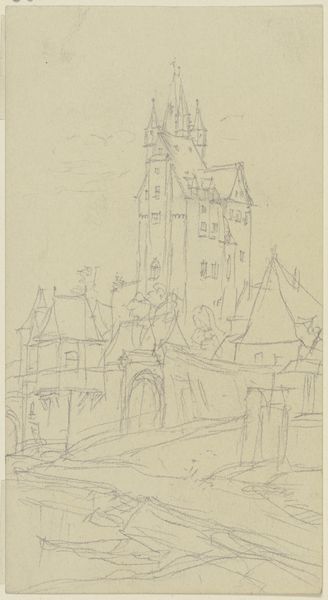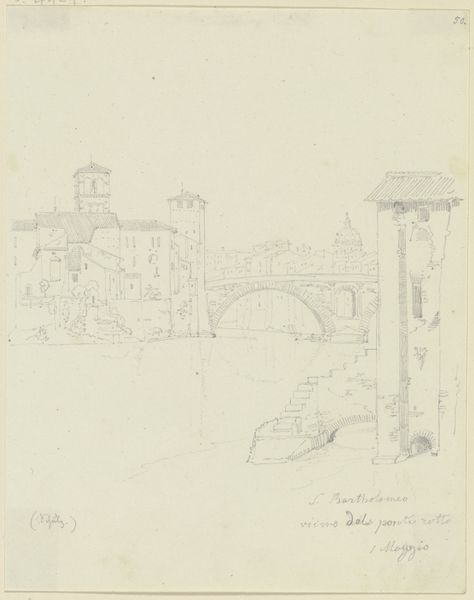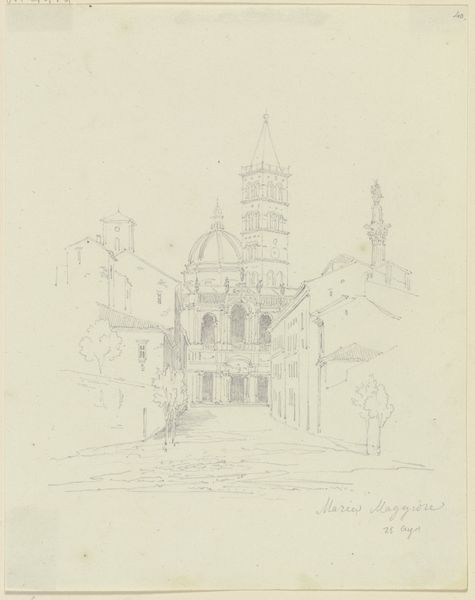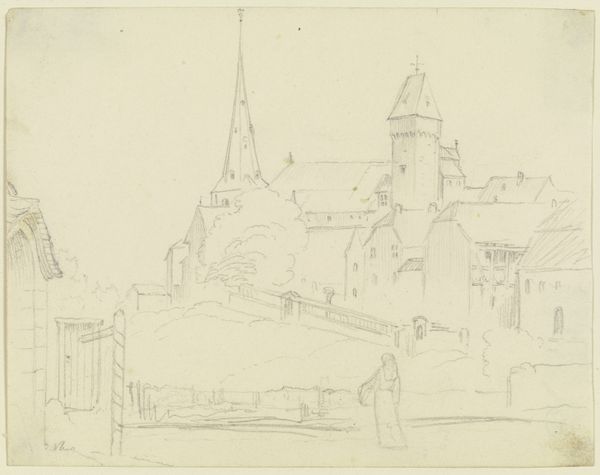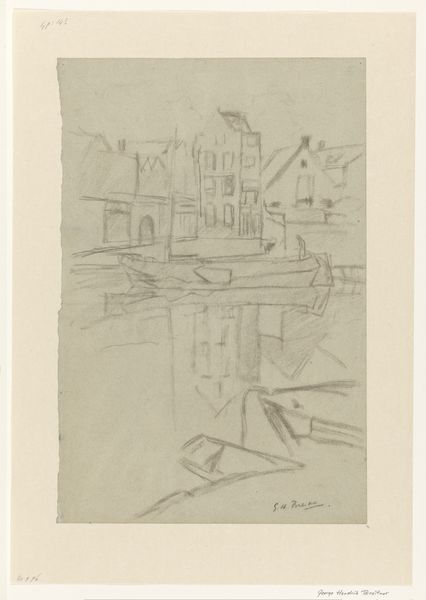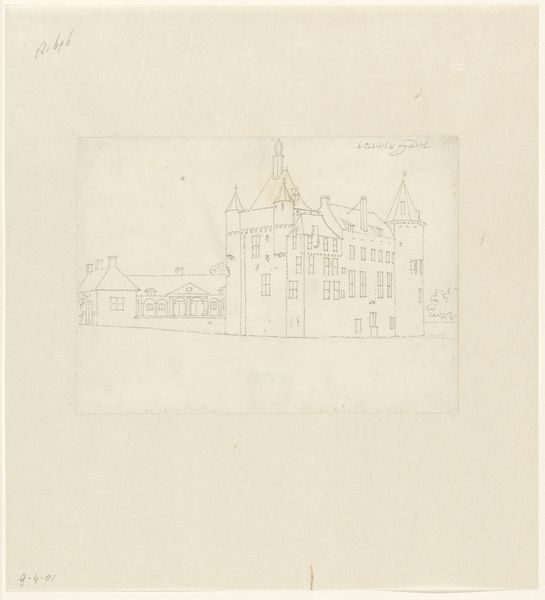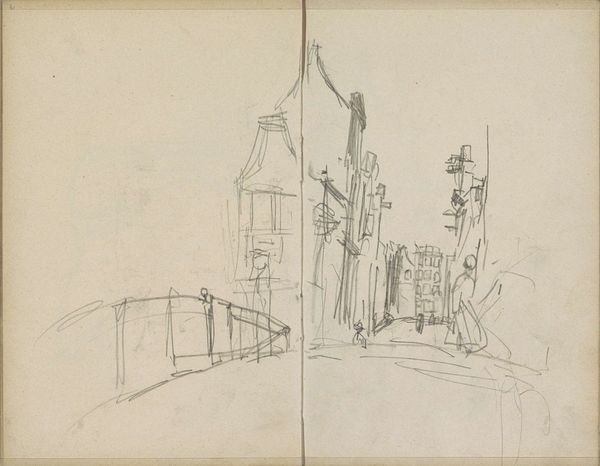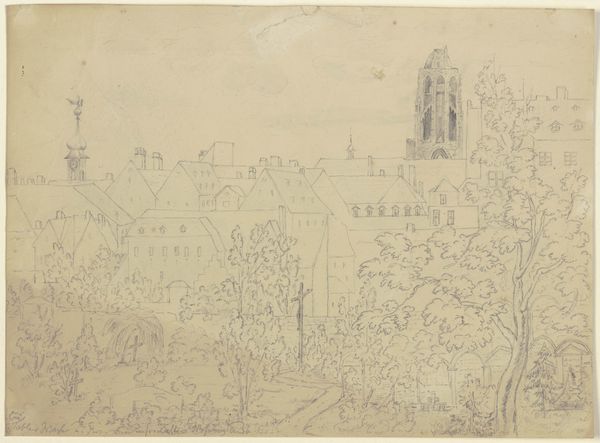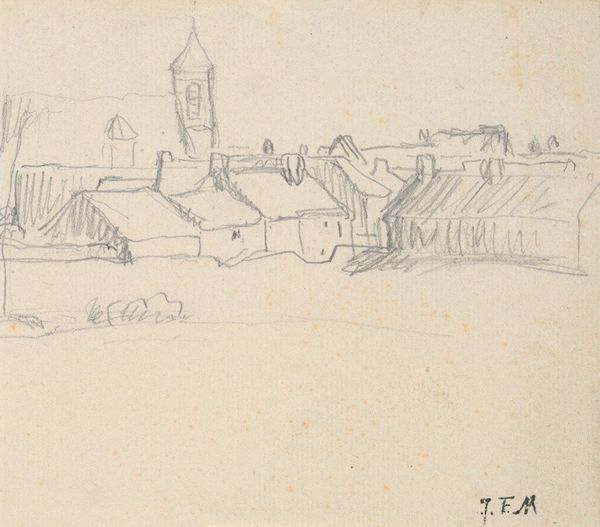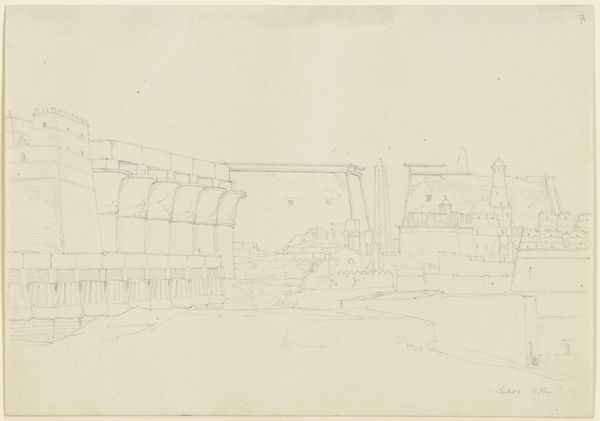
Santi Quattro Coronati in Rom, vom Monte Celio nahe Santi Giovanni e Paolo aus gesehen, im Hintergrund rechts S. Giovanni in Laterano, links S. Croce in Gerusalemme (_) 15 - 1828
0:00
0:00
drawing, paper, pencil, architecture
#
drawing
#
landscape
#
paper
#
pencil
#
architecture
#
realism
Copyright: Public Domain
Curator: This is a pencil drawing on paper by Friedrich Maximilian Hessemer, created between 1815 and 1828. The title is rather descriptive: "Santi Quattro Coronati in Rom, vom Monte Celio nahe Santi Giovanni e Paolo aus gesehen, im Hintergrund rechts S. Giovanni in Laterano, links S. Croce in Gerusalemme." In essence, a view of Rome from a specific vantage point. Editor: My initial impression is one of lightness, a sketch capturing not just the scene but also perhaps the fleeting moment in which it was observed. The lines are delicate, almost hesitant, yet they manage to convey the architectural weight of these historical buildings. Curator: Indeed. Note the precise linework. Hessemer delineates the architectural forms with an eye for detail, emphasizing the geometry inherent in Roman construction. Consider how the facade of the Santi Quattro Coronati is rendered—each window, each cornice, contributing to a rigorous sense of order. Editor: What strikes me are the symbols that rise above the Eternal City. The prominence of the basilicas— Laterano and Santa Croce— speak volumes about the enduring spiritual and political power concentrated in Rome. Even in a relatively simple drawing like this, we sense layers of history. Curator: Precisely, and beyond overt symbolism, note the structuring role that light and shadow play here. The light source, seemingly from the left, sculpts the buildings, creating a visual hierarchy. Notice the almost obsessive level of details used when portraying the buildings as if their image can be represented entirely. This can be connected with Hegel's views on symbols, as symbols lack that identity due to not portraying things completely. Editor: Yes, the subtle gradations create depth and a sense of atmospheric perspective, placing those important symbols within their cultural setting. Also note how there are many structures here that have ties with important historical power relationships. How this landscape served not only the local authority, but even greater ones from all over the world. Curator: In closing, it’s intriguing how Hessemer blends empirical observation with structural clarity. Editor: And it leaves us contemplating how the cityscape itself functions as a living archive of history.
Comments
No comments
Be the first to comment and join the conversation on the ultimate creative platform.

